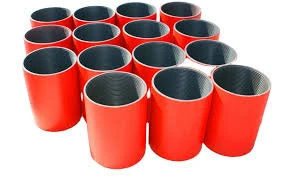- Afrikaans
- Albanian
- Amharic
- Arabic
- Armenian
- Azerbaijani
- Basque
- Belarusian
- Bengali
- Bosnian
- Bulgarian
- Catalan
- Cebuano
- Corsican
- Croatian
- Czech
- Danish
- Dutch
- English
- Esperanto
- Estonian
- Finnish
- French
- Frisian
- Galician
- Georgian
- German
- Greek
- Gujarati
- Haitian Creole
- hausa
- hawaiian
- Hebrew
- Hindi
- Miao
- Hungarian
- Icelandic
- igbo
- Indonesian
- irish
- Italian
- Japanese
- Javanese
- Kannada
- kazakh
- Khmer
- Rwandese
- Korean
- Kurdish
- Kyrgyz
- Lao
- Latin
- Latvian
- Lithuanian
- Luxembourgish
- Macedonian
- Malgashi
- Malay
- Malayalam
- Maltese
- Maori
- Marathi
- Mongolian
- Myanmar
- Nepali
- Norwegian
- Norwegian
- Occitan
- Pashto
- Persian
- Polish
- Portuguese
- Punjabi
- Romanian
- Russian
- Samoan
- Scottish Gaelic
- Serbian
- Sesotho
- Shona
- Sindhi
- Sinhala
- Slovak
- Slovenian
- Somali
- Spanish
- Sundanese
- Swahili
- Swedish
- Tagalog
- Tajik
- Tamil
- Tatar
- Telugu
- Thai
- Turkish
- Turkmen
- Ukrainian
- Urdu
- Uighur
- Uzbek
- Vietnamese
- Welsh
- Bantu
- Yiddish
- Yoruba
- Zulu
Understanding Different Types of Casing and Tubing Connections in Oil and Gas Industry
Casing and Tubing Connections A Comprehensive Overview
The oil and gas industry relies heavily on the integrity of casing and tubing connections, which are crucial for ensuring the safety and efficiency of drilling operations. Casing is the large diameter pipe that is installed in the wellbore to prevent the collapse of the surrounding rock, while tubing is the smaller diameter pipe through which the hydrocarbons are produced. The connections between these pipes must be robust enough to withstand extreme pressure, temperature fluctuations, and corrosive environments.
The Importance of Quality Connections
The strength and reliability of casing and tubing connections are paramount. These connections must be capable of handling significant mechanical loads and must also be resistant to various forms of corrosion. Instances of failure in these connections can lead to catastrophic consequences, including blowouts, leaks, or the loss of well control. As a result, the quality of material, precision in machining, and the expertise involved in making these connections are critical factors.
Types of Connections
Casing and tubing connections come in several types, each designed for specific applications and conditions
. Among the most common are the following- Threaded Connections These are widely used due to their simplicity and ease of installation. They involve male and female threads that screw into one another. While they provide a reliable seal, they may require additional equipment such as thread compounds to prevent leakage.
- Welded Connections For environments where high pressures and temperatures are present, welded connections offer an excellent solution. The welding process provides a continuous metal connection that can withstand significant stress. However, this method requires skilled labor and can be time-consuming.
casing and tubing connections

- Coupled Connections This type uses a coupling to join units of casing or tubing. Coupled connections can offer flexibility in installation, as pipes can be easily replaced without re-threading, though they may not provide the same level of integrity as welded joints under extreme conditions.
Understanding the specific application will guide the choice of connection type. Rigorous testing and evaluation processes, including pressure testing and visual inspections, are vital to ensure that the selected connection method meets the required safety standards.
Advancements in Connection Technology
Recent advancements in technology have significantly improved casing and tubing connections. The introduction of metal-to-metal sealing systems provides enhanced integrity and resilience, making them a preferred choice in challenging environments. These systems utilize precise engineering to create a tight seal that can withstand extreme conditions, including high pressure and corrosive substances.
Furthermore, innovations in materials such as high-strength low-alloy steels enable the production of lighter yet stronger connections, making them advantageous in offshore drilling environments where weight is a critical factor. Smart technologies, including real-time monitoring systems, are being integrated to provide data on the condition of connections, allowing for proactive maintenance and reducing the risk of failure.
Conclusion
In conclusion, casing and tubing connections are fundamental to the safe and efficient production of hydrocarbons. The integrity of these connections can heavily influence the overall success of drilling operations. As advancements continue in materials and technology, the industry can expect improved performance and reliability from casing and tubing connections. Proper selection, installation, and maintenance of these connections are essential to mitigate risks and ensure the long-term sustainability of oil and gas projects. Stakeholders in the industry must prioritize these aspects to enhance operational safety and efficiency in the demanding field of energy extraction.
-
Tubing Pup Joints: Essential Components for Oil and Gas OperationsNewsJul.10,2025
-
Pup Joints: Essential Components for Reliable Drilling OperationsNewsJul.10,2025
-
Pipe Couplings: Connecting Your World EfficientlyNewsJul.10,2025
-
Mastering Oilfield Operations with Quality Tubing and CasingNewsJul.10,2025
-
High-Quality Casing Couplings for Every NeedNewsJul.10,2025
-
Boost Your Drilling Efficiency with Premium Crossover Tools & Seating NipplesNewsJul.10,2025







